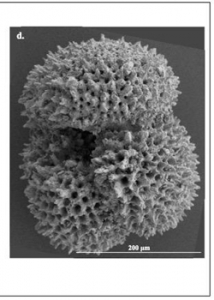Between 59 million to 51 million years ago, Earth experienced dramatic warming periods of both gradual warming that stretched over millions of years and sudden warming events. In a study in the Proceedings of the National Academy of Sciences, University of Hawaiʻi at Mānoa and University of Utah geoscientists revealed sea surface temperatures were closely linked with levels of atmospheric carbon dioxide (CO2) during sudden warming periods known as hyperthermals.
Further, the gradual warming was linked to CO2 from volcanic sources, whereas organic or methane-derived CO2 was linked to rapid warming.
"Volcanic sources of CO2 are usually smaller and act over long time scales (millions of years), whereas methanogenic or organic sources can have higher rates of input and act over shorter time scales (decades to millennia)," said Richard Zeebe, study co-author and oceanography professor in the UH Mānoa School of Ocean and Earth Science and Technology. "The higher rates are relevant to our future because human activities are releasing carbon at unprecedented rates compared to natural sources over the past 56 million years or more."

Today, human activities associated with fossil fuels are releasing carbon four to 10 times more rapidly than occurred during these ancient hyperthermal events. However, the total amount of carbon released during the ancient events is similar to the range projected for human emissions, giving researchers a glimpse of what could be in store for us and future generations.
Learning from the past
The study suggests emissions during two ancient hyperthermals are similar enough to today's anthropogenic climate change to help scientists forecast its consequences. The findings further provide case studies to test carbon cycle feedback mechanisms and sensitivities critical for predicting anthropogenic climate change as humans continue pouring greenhouse gases into the atmosphere on an unprecedented scale in the planet's history.
The research team analyzed microscopic foraminifera fossils-recovered in drilling cores taken from an undersea plateau in the Pacific-to characterize surface ocean chemistry at the time the shelled single-cell organisms were alive. Using a statistical model, they reconstructed sea surface temperatures and atmospheric CO2 levels over a 6-million-year period that covered two hyperthermals, the Paleocene-Eocene Thermal Maximum (56 million years ago) and Eocene Thermal Maximum 2 (54 million years ago).
"These events might represent a mid- to worst-case scenario kind of case study," said lead author Dustin Harper, a postdoctoral researcher at the University of Utah. "We can investigate them to answer what's the environmental change that happens due to this carbon release?"
The findings indicate that as atmospheric levels of CO2 rose, so too did global temperatures. During the hyperthermals, no ice sheets covered the poles and ocean surface temperatures were in the mid-90s degrees Fahrenheit.
Portions of this content are courtesy of the University of Utah.






